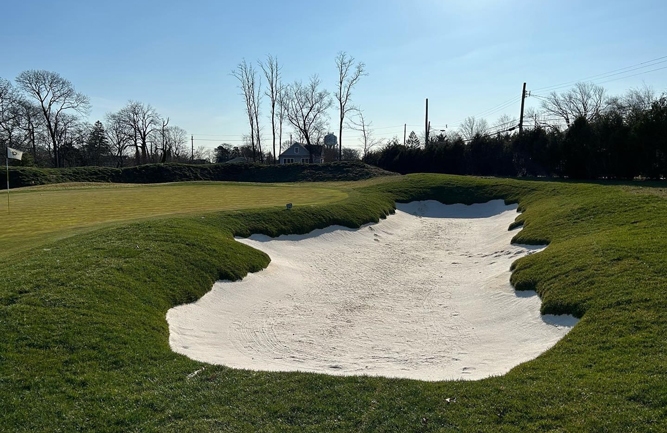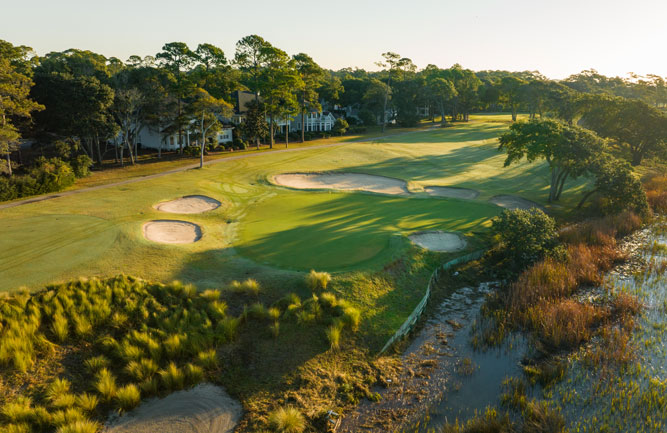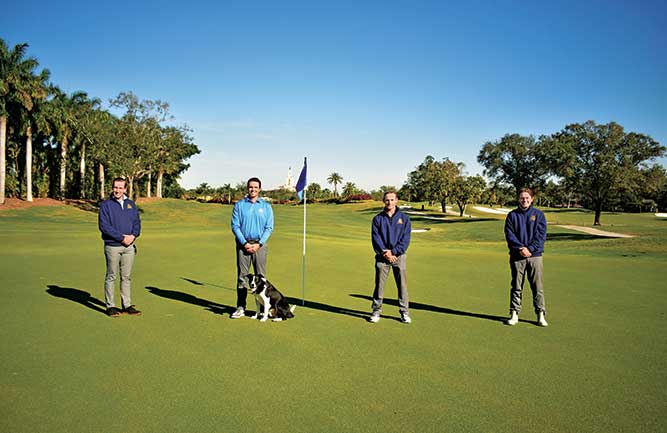Then there were two
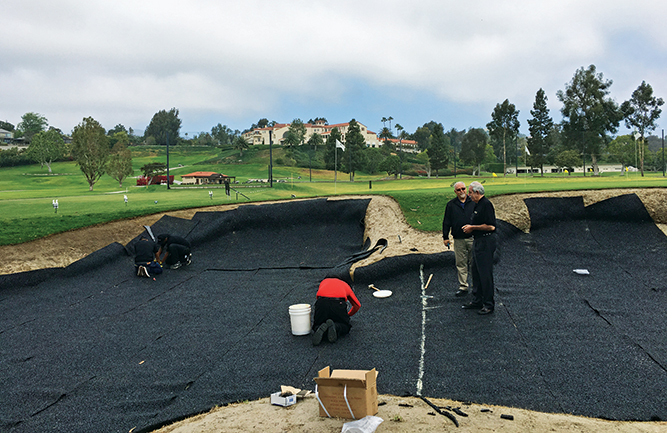
A Polylast bunker liner installation on the practice chipping green bunker at The Riviera CC.
A downpour in the middle of a big tournament can be a problem for any golf course, but for a course known for its bunkers, like The Riviera Country Club in Pacific Palisades, Calif., it can be disastrous.
During the 2017 Genesis Open, a strong storm rolled through, whipping around tree branches and soaking the turf with several inches of rain. Superintendent Matt Morton and his crew went to work on the golf course, clearing debris and pumping out bunkers. “We had a tremendous amount of rain — every bunker on the golf course had water in it,” Morton recalls. “We had to stop play and fix every bunker.”
Except for two, that is.
“The only bunkers that didn’t need any work were the two bunkers we had Polylast liner in,” explains Morton. “The sand held up on the face, and there was no trace of standing water.”
Morton discovered Polylast at the Golf Industry Show and opted to try the product on a couple of his bunkers, the defining features on his course.
“George Thomas designed a great, old-fashioned course and used bunkers as the main hazard on the property,” he says. “They are large bunkers, very deep, they can fill quickly with water. They kind of sit down in the ground, so drainage is critical. We looked at Polylast for a few of our steepest bunkers and haven’t had any problems.”
Polylast began in 2010 as a company that solely manufactured horse trailer flooring. Pete Laurence, the company’s founder, explains that a superintendent who used the product in a trailer that he used to haul his two mules, saw its potential and asked if he could use the product on his golf course.
It’s been about two and a half years since the first Polylast bunker liners were installed. The liner is made from recycled rubber free of metals or synthetics, sourced in the United States mainly from truck and farming equipment tires.
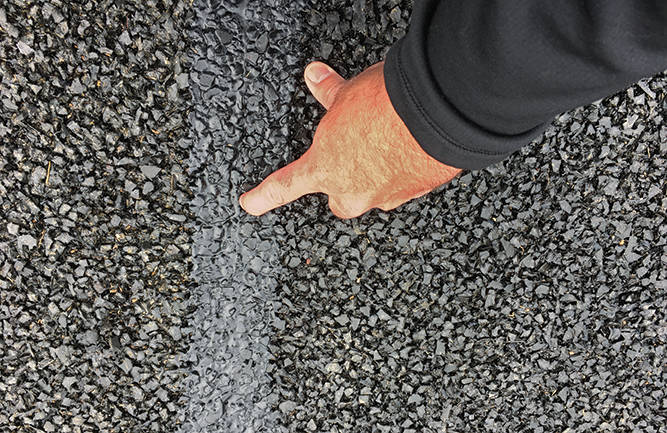
Polylast bunker liners are delivered in rolls, similar to sod, and easily glued together at the seams.
Laurence had a team install the liners on the first test bunkers at The Riviera. After watching the initial installation, Morton saw that the process looked a little familiar. “It’s just like ordering a truckload of sod,” he says. “The product is delivered in rolls, you roll it right out, cut some edges, glue (the seams) together and you pin it where you want to.”
Aside from its easy installation and a 10-year warranty, Morton notes that the product has an upside for golfers as well. “From a playability standpoint, it’s a lot friendlier. There’s less liability for scratching clubs compared to the harder liners. Once we saw that the durability was there, we were impressed.”
So impressed that The Riviera Country Club is looking to go from two Polylast-lined bunkers to lining all of their 60 bunkers this year — approximately 130,000 square feet. Morton plans to have his crew install the product, saving on labor and installation costs.
While there’s no solution for torrential rains during tournaments, he is glad he’s at least found something that can help with bunker drainage.
“I think Polylast provides a practical option for bunker liners in our industry,” Morton says. “I think the fact that the product is recycled, it’s kind of neat that you can take some old tires and make a product that helps our industry along.”
Photos: Matt Morton









